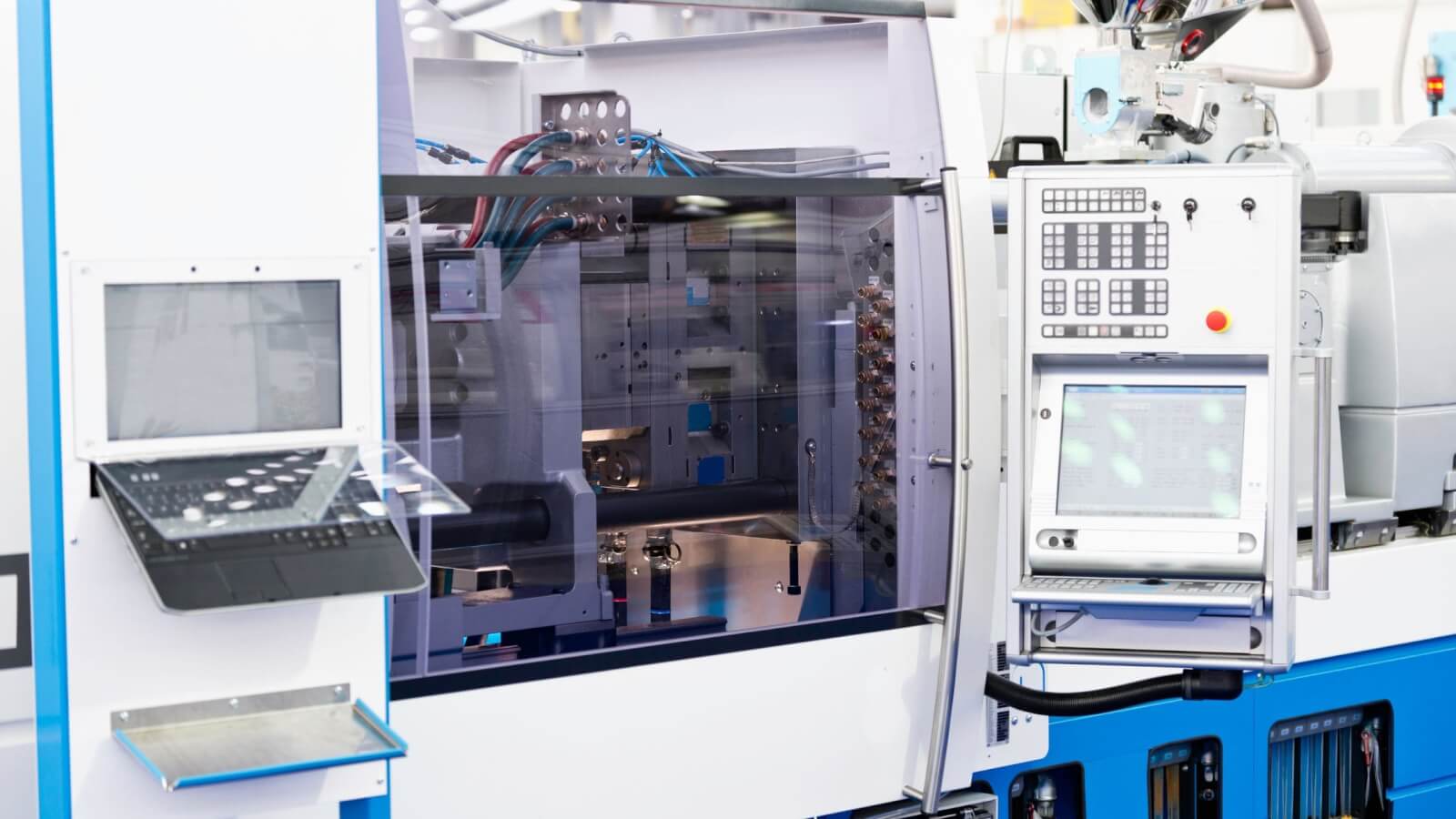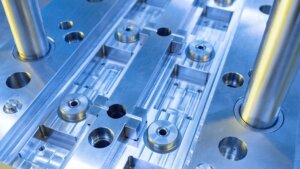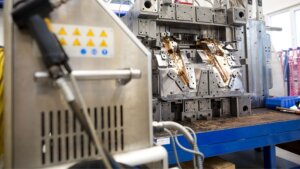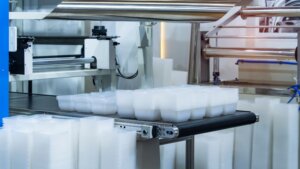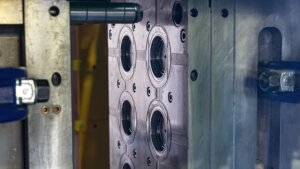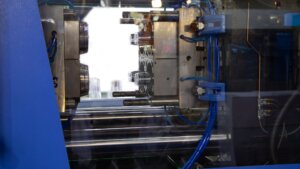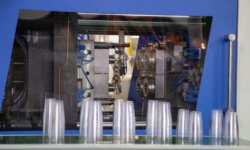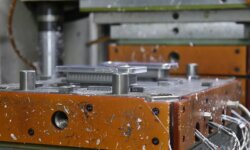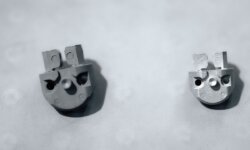In the realm of manufacturing, particularly in the plastics industry, the durability and longevity of injection molds are pivotal for efficient production.
Understanding the life expectancy of these molds is not just about numbers; it’s about grasping the intricate dance of material, design, and maintenance that dictates their lifespan. This article dives deep into the world of injection molds, shedding light on their average lifespan and the factors influencing it.
What is Injection Mold?
An injection mold, often made from materials like steel or aluminum, is the heart of the injection molding process, shaping everything from everyday items to complex components.
The precision and quality of an injection mold tooling directly affect the quality of the final product, usually made from plastic material, making its design and maintenance a subject of utmost importance.
What is Average Injection Mold Life Expectancy?
An injection mold life expectancy can range from hundreds to over a million cycles.
Understanding the average life expectancy of injection molds in terms of cycles is crucial for manufacturers to anticipate production capabilities and plan for maintenance and replacements.
Average Life Expectancy in Cycles:
- High-End Molds (Class 101): These molds, designed for high volume production and made from materials like hardened steel, can endure over a million cycles. They are the standard-bearers in terms of longevity.
- Mid-Range Molds (Class 102 and 103): These are suitable for medium to high volume production, with life expectancies ranging from 100,000 to 500,000 cycles. Class 102 molds can typically withstand up to half a million cycles, while Class 103 molds are often limited to around 100,000 cycles.
- Lower-End Molds (Class 104 and 105): Used for smaller production runs and prototyping, these molds have a significantly shorter lifespan. Class 104 molds can endure approximately 10,000 to 25,000 cycles, and Class 105 molds are typically limited to under 500 cycles.
How Are Injection Mold Lifespans Measured and Classified?
Injection mold life expectancy is methodically measured and classified, with the Society of the Plastics Industry (SPI) mold classifications serving as a primary benchmark in the industry.
SPI Mold Classifications and Standards:
- Purpose: These classifications provide a standardized framework for categorizing molds based on their durability, material quality, and expected lifespan.
- Impact: This system aids manufacturers in making informed decisions about mold selection, aligning their production needs with the capabilities of different mold classes.
- Influence on Manufacturing: The classification of a mold directly impacts the manufacturing process, affecting factors like production volume, maintenance requirements, and overall cost-effectiveness.
Class 101 Mold
Class 101 molds represent the pinnacle of mold design and durability, catering to high-volume and high-demand manufacturing environments.
Main Specifications and Characteristics:
- Life Expectancy: Designed for longevity, these molds can withstand over a million cycles, making them ideal for continuous, high-speed production.
- Material Quality: Typically constructed from premium-grade, hardened steel, Class 101 molds offer unparalleled strength and resistance to wear and tear. The steel used often undergoes special heat treatments to enhance its durability and performance under extreme conditions.
- Design Complexity: Engineered to handle complex designs and high-stress conditions, these molds are characterized by their intricate and precise tooling. This includes sophisticated cooling systems, specialized ejection mechanisms, and advanced gating techniques to ensure optimal molding.
- Applications: Best suited for large-scale manufacturing where consistent quality and high output are paramount. These molds are often employed in the automotive, aerospace, and medical device industries where precision and reliability are critical.
- Maintenance Protocol: Despite their robustness, they require a comprehensive maintenance regime to ensure optimal performance over their extended lifespan.
- Cost Consideration: While they represent a significant initial investment, their durability and efficiency make them cost-effective for high-volume production scenarios.
Class 102 Mold
Class 102 molds, recognized for striking a balance between longevity and cost-effectiveness, are highly suitable for medium to high volume production cycles. These molds stand as a testament to engineering efficiency, offering a robust solution for a variety of manufacturing scenarios where neither the extreme volume of Class 101 molds nor the lower volumes of Class 103 molds are required.
Main Specifications and Characteristics:
- Life Expectancy: Designed to endure up to 500,000 cycles, Class 102 molds cater to production needs that are demanding yet not as intensive as those requiring Class 101 molds. This makes them a practical choice for manufacturers who need a balance between high durability and economic viability.
- Material Quality: Often constructed from high-grade steel, these molds provide a good balance of durability and cost-efficiency.
- Physical Properties: Class 102 molds are characterized by their sturdy design, capable of tolerating the stresses of medium to high volume production. This includes the ability to withstand various injection pressures and temperatures without significant degradation.
- Usage: These molds are particularly well-suited for industries where production requirements are substantial but do not necessitate the highest level of mold endurance. Examples include consumer electronics, automotive components, and other commercial goods that require consistent quality over numerous production runs.
- Maintenance Requirements: Regular maintenance is essential, though it may not be as intensive as that required for Class 101 molds.
Class 103 Mold
Class 103 molds, designed to cater to lower production volumes, provide a practical and cost-effective solution for less intensive manufacturing processes. These molds are tailored for scenarios where the extreme durability of Class 101 and 102 molds isn’t necessary, thereby offering an optimal blend of performance and economy for specific manufacturing needs.
Main Specifications and Characteristics:
- Lifespan: Designed to endure up to 100,000 cycles, making them suitable for moderate production requirements.
- Material Composition: These molds are constructed from quality materials, including less hardened variants of steel, which offer durability and resilience. While they may not match the high-end materials of Class 101 molds, they provide sufficient strength for their intended use-case scenarios.
Physical Properties: Class 103 molds are designed with simplicity and functionality in mind. They are typically less complex, facilitating easier production of simpler part designs under lower stress conditions. - Application Suitability: Particularly suitable for smaller production runs or for products that do not require the extreme endurance of higher class molds. They are often the go-to choice for special projects, prototype development, or products with shorter life cycles in the market.
- Maintenance Protocol: Although requiring regular maintenance, the frequency and intensity of care are generally less demanding compared to higher-class molds. This includes standard cleaning, inspection, and occasional repairs or adjustments to ensure consistent mold performance.
Class 104 Mold
Class 104 molds cater to lower production volumes, making them ideal for specific applications such as prototyping or limited-run productions.
Main Specifications and Characteristics:
- Life Expectancy: Designed to deliver a functional life range of approximately 10,000 to 25,000 cycles, Class 104 molds are particularly well-suited for low-volume applications.
- Material Composition: Class 104 molds are typically constructed from softer materials compared to their higher-class counterparts. The use of aluminum or mild steel not only aids in reducing manufacturing costs but also ensures sufficient durability for their intended limited use.
- Design and Use: These molds are engineered with simplicity in mind for less complex part designs. While they may lack the durability of higher-class molds, their cost-effectiveness makes them a valuable choice for short production runs or prototyping, where the intricacy and stress on the mold are comparatively low.
- Physical Properties: Their construction reflects a focus on flexibility and adaptability for varied designs, albeit with reduced longevity.
- Maintenance Needs: Regular maintenance is less stringent than higher-class molds but still crucial for maximizing their lifespan.
- Ideal Applications: Perfect for specialized, low-volume products, prototyping projects, and applications where mold longevity is not the primary concern.
Class 105 Mold
Class 105 molds represent the lowest tier in the SPI mold classification, primarily used for extremely low volume productions or one-off projects.
Main Specifications and Characteristics:
- Lifespan: These molds are designed for less than 500 cycles, making them the least durable in the SPI classification system.
- Material Selection: Constructed from the least expensive materials, like cast metal or epoxy, they are designed for very specific, limited-use cases.
- Design Suitability: Ideal for simple designs and products where the mold is not subjected to intensive use.
- Physical Characteristics: They exhibit basic functionality with minimal complexity in design and structure.
- Maintenance Protocol: Given their limited use and lifespan, these molds require minimal maintenance efforts.
- Application Scope: Suited for one-off projects, experimental designs, or extremely low volume productions where the cost of mold is a significant consideration.
What Factors Influence the Lifespan of Injection Molds?
The lifespan of an injection mold is contingent upon multiple factors, each playing a crucial role in determining its durability and efficacy. Understanding these factors is essential for manufacturers to ensure optimal performance and longevity of their molds.
Injection Mold Material Quality
The material from which a mold is made is a key factor influencing its durability. Different materials offer varying degrees of hardness, wear resistance, and capacity to withstand high temperatures and pressures.
Steel Alloys
Steel alloys are commonly used in plastic injection mold making due to their strength and durability. The type of steel alloy chosen can greatly affect injection mold lifespan.
- Characteristics: Steel alloys are prized for their hardness, resistance to abrasion, and ability to withstand high temperatures.
- Applications: Ideal for high-volume production and complex mold designs.
- Varieties: There are several types of steel alloys used, each with unique properties suited to different molding requirements.
P20 (1.2311)
- Hardness Range: Typically, P20 steel has a hardness range of 28-32 HRC.
- Mold Life Expectancy: P20 is known for its good machinability and can typically last for around 300,000 to 500,000 shots/cycles, making it a popular choice for less strenuous applications.
- Usage: Commonly used in the production of large molds due to its excellent balance between cost and durability.
H13 (1.2344)
- Hardness Range: H13 steel usually falls within the hardness range of 42-52 HRC.
- Mold Life Expectancy: It is renowned for its high toughness and can endure upwards of one million shots/cycles, especially in high-temperature applications.
- Usage: Frequently utilized for molds subjected to harsher conditions, like those in high-pressure injection molding processes.
S136 (1.2083)
- Hardness Range: S136 steel exhibits a hardness range of approximately 48-52 HRC.
- Mold Life Expectancy: This type of steel is known for its exceptional corrosion resistance and can sustain hundreds of thousands to a million shots/cycles, especially in aggressive environments.
- Usage: Ideal for molds used in corrosive applications, such as those involving PVC and other abrasive materials.
420 Stainless Steel Material Description:
- Hardness Range: 420 stainless steel typically has a hardness range of 48-52 HRC.
- Mold Life Expectancy: It is known for its impressive corrosion resistance and can last for several hundred thousand shots/cycles, making it suitable for molds used in corrosive environments.
- Usage: This alloy is often chosen for its polishability and corrosion resistance, ideal for molds used in medical devices, food packaging, and other applications where cleanliness and precision are critical.
718 (1.2738) Material Description:
- Hardness Range: 718 steel, also known as 1.2738, generally has a hardness range of 33-37 HRC after quenching and tempering.
- Mold Life Expectancy: It can sustain up to 500,000 shots/cycles, making it a versatile option for medium to high-volume production.
- Usage: This material is favored for its excellent machinability and uniform hardness, suitable for complex mold designs and detailed tooling components.
2344ESR (Thru-Hardening Steel) Material Description:
- Hardness Range: 2344ESR steel typically exhibits a hardness of 50-54 HRC.
- Mold Life Expectancy: Known for its high-temperature strength, it can endure over a million cycles, particularly in high-stress and high-temperature molding processes.
- Usage: Ideal for manufacturing robust molds for high-volume production, especially in the automotive and aerospace industries where durability is paramount.
NAK80 (P21) Material Description:
- Hardness Range: NAK80 (P21) steel has a hardness range of 37-43 HRC.
- Mold Life Expectancy: This alloy can last for approximately 300,000 to 500,000 shots/cycles.
- Usage: NAK80 is often used for intricate mold designs due to its excellent polishability and wear resistance, making it suitable for high-precision and aesthetic parts like consumer electronics and automotive components.
2767 Material Description:
- Hardness Range: 2767 tool steel is typically hardened to 45-52 HRC.
- Mold Life Expectancy: It is known for its toughness and resistance to wear, offering a lifespan of several hundred thousand cycles.
- Usage: This alloy is particularly used in heavy-duty molds for large parts, where its strength and durability are crucial to withstand prolonged production cycles and mechanical stress.
Aluminum Alloys
Aluminum alloys are increasingly being utilized in the construction of injection molds due to their specific properties that benefit certain manufacturing scenarios. They are particularly favored for their lightweight nature, thermal conductivity, and corrosion resistance.
- Characteristics: Aluminum injection molds are known for their excellent thermal conductivity, which can lead to faster cooling times and shorter cycle times in the injection molding process.
- Applications: They are often used for lower volume production runs or for parts that do not require the extreme hardness and wear resistance of steel.
7075 Aluminum
- Hardness Range: 7075 Aluminum alloy typically has a hardness range of 53-63 HRC when properly heat-treated.
- Mold Life Expectancy: This alloy can withstand approximately 100,000 to 150,000 shots/cycles, making it suitable for moderate production runs.
- Usage: Known for its high strength, 7075 is often used in aerospace applications and is ideal for molds requiring a higher strength-to-weight ratio.
6061 Aluminum
- Hardness Range: 6061 Aluminum generally has a lower hardness range of 40-50 HRC.
- Mold Life Expectancy: It is capable of sustaining about 50,000 to 100,000 shots/cycles, suitable for lower volume production or prototypes.
- Usage: Due to its excellent corrosion resistance and weldability, 6061 is commonly used in automotive applications and consumer goods.
List of Other Materials and Injection Mold Lifespan:
- ABS Plastic: Widely used for its good impact resistance and toughness, ABS plastic injection molds can last for about 100,000 to 300,000 cycles.
- Polycarbonate: Known for its strength and transparency, polycarbonate molds typically have a lifespan of around 100,000 to 200,000 cycles.
- Polypropylene: With its resistance to fatigue, polypropylene molds can endure approximately 500,000 to 1,000,000 cycles.
- Nylon (Polyamide): Durable and resistant to wear and chemicals, nylon molds can sustain about 100,000 to 300,000 cycles.
- PVC: Due to its versatility and chemical resistance, PVC molds can last from 100,000 to 500,000 cycles, depending on the application.
Mold Design and Structure
The intricacy and precision of a mold’s design are fundamental in determining its resilience over time. A well-thought-out design not only ensures efficient production but also significantly extends the mold’s lifespan.
- Complexity: Complex molds with intricate details may require more maintenance and are potentially more susceptible to wear.
- Precision: High-precision molds are designed to minimize wear and tear, thereby extending their lifespan.
- Design Quality: The overall quality of the mold design, including the arrangement of its components and thermal balance, plays a crucial role in its durability.
Operating Environment
The conditions under which the mold operates, including aspects like temperature, humidity, and cleanliness, can greatly impact mold structure and its longevity.
- Temperature: Extreme temperatures, either too high or too low, can affect the mold material, potentially leading to faster degradation.
- Humidity: Excessive moisture can cause corrosion, especially in molds made of susceptible injection molding materials.
- Cleanliness: A clean operating environment reduces the risk of mold contamination and damage, thereby prolonging its lifespan.
Production Run Time and Cycle Time
The frequency and duration of mold usage, particularly in high-volume production settings, are critical factors that affect its wear and tear.
- Frequency of Use: Molds used in continuous, high-volume production runs may degrade faster due to the constant stress and thermal cycling.
- Production Cycle Time: Longer cycle times can lead to increased exposure to high temperatures and pressures, accelerating wear.
- Rest Periods: Adequate rest periods between cycles can help in reducing thermal and mechanical stress on the mold.
Maintenance and Surface Treatment
Regular maintenance, including routine cleaning and repairs, is crucial in prolonging the life of injection molds. Surface treatments can also play a significant role in this regard.
Example:
A manufacturer reported that an injection mold treated with a protective anti-corrosion coating and subjected to bi-weekly maintenance schedules lasted approximately 30% longer than untreated counterparts. The coated mold, used for high-density polyethylene (HDPE) products, showed a life expectancy of around 1.2 million cycles, compared to 900,000 cycles for untreated molds.
Injection Molding Machine Conditions
The condition and performance of the injection molding machine, including factors like precision and stability, can directly impact the wear and tear on the mold.
Example:
In a study, molds operated on high-precision injection molding machines with consistent temperature control showed less wear compared to those on older, less precise machinery. Molds on precision machines demonstrated a 20% increase in lifespan, with average life expectancies reaching up to 1.1 million cycles.
Quality of Molded Material
The type of plastic materials or other materials being molded can have a significant effect on the mold. Abrasive or corrosive materials can accelerate mold wear.
Example:
A manufacturing facility using abrasive glass-filled polymers noted a reduced mold lifespan compared to when using standard thermoplastics. Molds used for glass-filled polymers had a life expectancy of about 600,000 cycles, while those used for standard plastics like polypropylene could last up to 1 million cycles.
Injection Parameters
Injection parameters, including pressure, temperature, and speed, can significantly impact the stress endured by a mold, thereby affecting its durability.
Example:
A study in a high-volume automotive parts manufacturer revealed that reducing injection pressure by 10% and moderating temperature controls increased mold lifespan by 15%. The adjusted parameters resulted in an average mold life of 1.15 million cycles, compared to 1 million cycles under previous conditions.
Mold Storage Conditions
The way a mold is stored when not in use, particularly its environmental conditions and protection from elements, is pivotal in preserving its condition.
Example:
An electronics component manufacturer implemented climate-controlled storage for their molds and reported a 20% increase in mold lifespan. Molds stored under controlled conditions had an average life expectancy of 1.2 million cycles, as opposed to 1 million cycles in standard storage.
Mold Handling and Setup Practices
Improper handling or incorrect setup of molds can cause physical damage or misalignments, significantly shortening the mold’s operational life.
Example:
A case study in a medical device company showed that improved handling and setup protocols reduced mold damage incidents by 30%. Enhanced practices led to an increase in mold lifespan from 800,000 cycles to over 1 million cycles.
Thermal Expansion and Contraction
Thermal expansion and contraction is a significant factor in the lifespan of injection molds. The cyclic nature of the injection molding process, involving heating and cooling, can induce stress on the mold materials.
Example:
- Scenario: An electronics manufacturer was experiencing frequent mold failures in their production line.
- Investigation: The molds were subjected to rapid temperature changes during the molding process, causing excessive thermal stress.
- Intervention: Introduction of a gradual heating and cooling cycle, to minimize thermal shock.
- Result: The implementation of controlled temperature transitions extended the mold life by about 25%, translating to approximately 200,000 additional cycles before requiring maintenance or replacement.
Use of Mold Release Agents
The type and frequency of mold release agents used can significantly affect the lifespan of injection molds. While necessary for efficient production, these agents can impact the mold surface, especially if not correctly matched with the mold material.
Example:
- Scenario: A company specializing in automotive parts reported decreasing mold performance and surface quality.
- Investigation: Overuse and misapplication of aggressive chemical release agents were identified as the cause of premature mold wear.
- Intervention: A switch to a milder, more compatible release agent and training for staff on proper application techniques.
- Result: This change led to an improvement in mold surface integrity and extended the life of the mold by around 100,000 cycles.
Mold Coatings
The application of specialized coatings to injection molds can significantly enhance their resistance to wear and corrosion. These coatings often provide a protective barrier, reducing direct contact with harsh materials and environmental factors.
Example:
- Background: A high-volume automotive parts manufacturer faced rapid mold degradation due to aggressive use.
- Intervention: The company decided to apply a high-grade PVD (Physical Vapor Deposition) coating on their molds.
- Outcome: The coated molds displayed a 30% increase in lifespan, with improved resistance to abrasive wear and corrosion, leading to fewer production interruptions and maintenance needs.
Frequency of Mold Changes
The frequency of mold changes and setups in the injection molding process can significantly influence mold wear and tear. Frequent changes can lead to physical damage or alignment issues, which reduce the mold’s effective lifespan.
Example:
- Scenario: A consumer goods manufacturer frequently changed molds to meet varied product demands.
- Problem: This frequent changing led to increased wear and misalignment issues.
- Solution: Implementing a standardized setup procedure and training staff on careful handling significantly reduced the incidence of damage, improving the mold lifespan by around 20%.
Quality of Water Used in Cooling Channels
The quality of water used in a mold’s cooling channels is a critical factor. Impurities or high mineral content in the water can lead to internal corrosion or buildup, affecting mold efficiency and longevity.
Example:
- Situation: A medical device manufacturer noticed a decrease in mold performance.
- Investigation: It was discovered that hard water was being used in the mold cooling channels.
- Resolution: Switching to filtered, softened water and regular maintenance of the cooling system resulted in a marked improvement in mold condition and an extension of its usable life by approximately 25%.
What Are Common Injection Molding Defects and Their Impact on Mold Life?
In the realm of injection molding, various defects can arise, affecting both the quality of the produced parts and the lifespan of the molds. Understanding these defects is essential for enhancing mold longevity and ensuring efficient production.
Flow Lines
These are streaks, patterns, or lines that appear on the part’s surface, often near the gates or narrow sections.
- Impact on Mold Life: Flow lines may indicate uneven cooling or inappropriate injection speed, leading to stress on certain mold parts, potentially decreasing their lifespan.
Sink Marks
Small depressions or recesses on the part’s surface.
- Impact on Mold Life: Sink marks often result from insufficient cooling time or material in certain areas, leading to uneven shrinkage and stress on the mold.
Burn Marks
Black or rust-colored discoloration on the edge or surface of the part.
- Impact on Mold Life: These are often caused by trapped air or excessive heating, which can degrade mold components over time.
Delamination
Surface delamination is when thin layers of material appear separated or flaky on the part’s surface.
Impact on Mold Life: Delamination indicates issues with material purity or processing, which can increase wear on the mold surface.
Flash
Excess material that seeps out of the mold cavity, typically along the parting line.
- Impact on Mold Life: Flash often suggests improper clamp force or wear on the mold, potentially leading to further damage if not addressed.
Other Relevant Defects:
- Warping: Injection molded parts distort during cooling. Impact: Stresses the mold during ejection, potentially misaligning mold components.
- Short Shot: Incomplete filling of the mold cavity. Impact: May lead to increased cycles for correction, wearing out the mold faster.
- Jetting: Wavy patterns caused by molten plastic pushing against the mold cavity. Impact: Can lead to erosion or damage to specific mold areas.
How Can Injection Mold Lifespan Be Extended?
Extending the lifespan of injection molds is crucial for maximizing efficiency and minimizing costs in the manufacturing process. Several strategies and technologies can significantly contribute to this goal:
- Regular Maintenance: Timely and thorough maintenance is key. This includes cleaning the mold, checking for wear and tear, and making necessary repairs.
- Optimal Operating Conditions: Ensuring the injection molding machine operates under ideal conditions (appropriate temperature, pressure, and injection speed) reduces stress on the mold.
- Use of Quality Materials: High-grade steel or aluminum molds tend to last longer than those made from less durable materials.
- Coatings and Treatments: Applying protective coatings can shield molds from corrosion and wear.
- Mold Structure Design Improvements: Designing molds with uniform wall thickness and adequate cooling channels can reduce the risk of defects and wear.
- Controlled Environment: Storing molds in a controlled environment prevents rust and degradation.
- Training Personnel: Skilled operators and maintenance staff can significantly extend mold life through proper handling and upkeep.
Best Practices and Common Mistakes in Maintenance affecting Injection Mold Lifespan?
Effective maintenance is pivotal in prolonging the life of injection molds. Below are some best practices and common pitfalls.
- Regular Cleaning: Removing residues and lubricating moving parts can prevent wear and tear.
- Scheduled Inspections: Regularly scheduled checks can identify issues before they become serious.
- Proper Storage: Molds should be stored in a clean and dry environment with proper temperature control
- Avoiding Overuse: Rotating molds and not overusing a single mold can distribute wear evenly.
Common Mistakes:
- Neglecting Regular Maintenance: Infrequent or improper maintenance can accelerate mold degradation.
- Improper Handling: Mishandling during installation or removal can damage mold components.
- Overlooking Minor Issues: Small problems can escalate into major damages if ignored.
What is the schedule for injection mold maintenance?
A well-defined maintenance schedule is critical for injection mold care. Here’s an ideal timeline:
- After Every Production Run: Perform basic cleaning and inspection for any visible damage.
- Monthly: Conduct a thorough inspection of all mold components, including ejector pins and cooling channels.
- Annually: Schedule a detailed examination and maintenance session, possibly involving disassembly for deep cleaning and repair.
Conclusion
Extending injection mold tool life is a multifaceted approach that involves meticulous maintenance, optimal operation conditions, use of high-quality materials, and continuous improvement in mold design and handling.
Regular maintenance, both scheduled and predictive, plays a vital role. With the right practices, the life expectancy of molds can be significantly increased, leading to cost savings and enhanced efficiency in the plastics industry.
